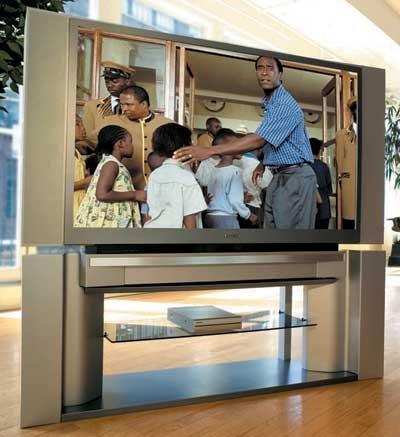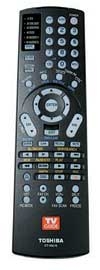Toshiba 52-inch DLP HDTV

With new TV technologies springing up like crazy, it makes sense to sift through the options and single out the best deals. Although a new 50-inch plasma TV costs much less today than it did a few years back, at around $5,000 and up, it still ain't cheap. But a $3,300 DLP (Digital Light Processing) rear-projection HDTV with a 52-inch screen - now we're talking! The chip-based "microdisplay" technology used in DLP TVs has the dual advantage of making the sets lightweight and slim. Maybe not as slim as a wall-hanging plasma or LCD, but the 15-inch depth of most DLP rear projectors makes them more manageable than old-school tube-type TVs.
Toshiba's 52HM94 has a built-in HDTV tuner that handles both analog and unscrambled digital cable programs, and it also has a CableCARD slot to access premium channels like HBO and Showtime without a separate box. If you go that route, the set's free TV Guide On Screen program guide should take the place of the one supplied by a cable box, giving you a program grid with channel listings eight days in advance.
|
Along with the TV, Toshiba sent me its $500 Symbio 160HD4 A/V hard-disk recorder to check out. When connected to the FireWire port of a 2004 or later Toshiba HDTV, this compact 160-gigabyte drive provides TiVo-like program pausing and recording of both standard- and high-def programs. It's also designed to be used with TV Guide On Screen for time-shifting - another TiVo-esque touch.
The TV's silver-gray cabinet tapers down radically from the top to its rear panel. Speakers flare out from the sides, and front-panel controls are embedded in a touch-sensitive pad running directly below the screen. The optional stand (shown) not only matches the TV's styling but also provides shelves for a center speaker and a DVD player. Most connections you might need are provided, including HDMI (High Definition Multimedia Interface) and a pair of FireWire (a.k.a. i.Link or IEEE 1394) ports. There's also a set of flash-media slots that accommodate a wide range of card types.
The well-organized remote control is fully backlit, making it easy to locate buttons in the dark. It can operate many other devices besides the TV, either directly via infrared (IR) codes or through Toshiba's TheaterNet system, which uses the TV screen as an interface to operate FireWire-connected devices as well as IR-controlled components using the supplied dual-link IR emitter. Switching sources with the remote is a two-step process: you hit the Input button and then scroll through them or select a number from an onscreen list. Hitting the Pic Size button calls up five choices for aspect ratio (display shape), four of which can be used for both standard- and high-definition programs.
 SETUP This was a nonstarter as far as TV Guide On Screen was concerned. I plugged in my digital cable feed, stepped through the instructions, and allowed the Toshiba to sit overnight (TV Guide data downloads over a 24-hour period). It never loaded, and the problem persisted even when I used an off-air antenna as the source for my download. This was a serious disappointment since the Symbio recorder needs the TV Guide data for program buffering and time-shifting - two essential features. As it stood, I could only use the Symbio for manual on-the-fly recording (for which it worked fine). Toshiba and TV Guide both told us that they're aware of the problem and are working to develop a solution as soon as possible.
SETUP This was a nonstarter as far as TV Guide On Screen was concerned. I plugged in my digital cable feed, stepped through the instructions, and allowed the Toshiba to sit overnight (TV Guide data downloads over a 24-hour period). It never loaded, and the problem persisted even when I used an off-air antenna as the source for my download. This was a serious disappointment since the Symbio recorder needs the TV Guide data for program buffering and time-shifting - two essential features. As it stood, I could only use the Symbio for manual on-the-fly recording (for which it worked fine). Toshiba and TV Guide both told us that they're aware of the problem and are working to develop a solution as soon as possible.
- Log in or register to post comments




















































